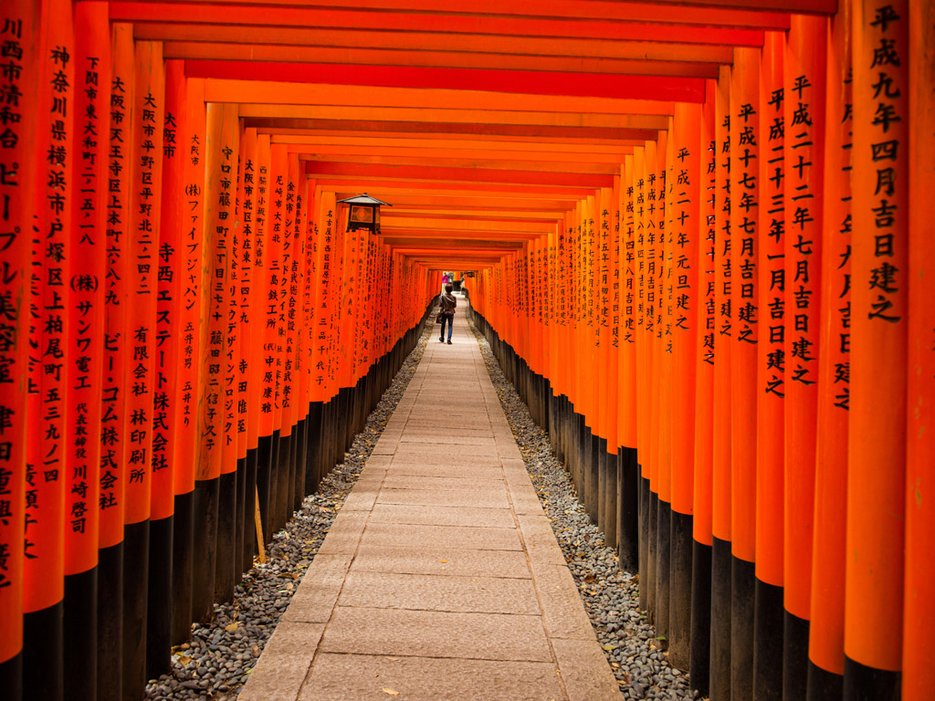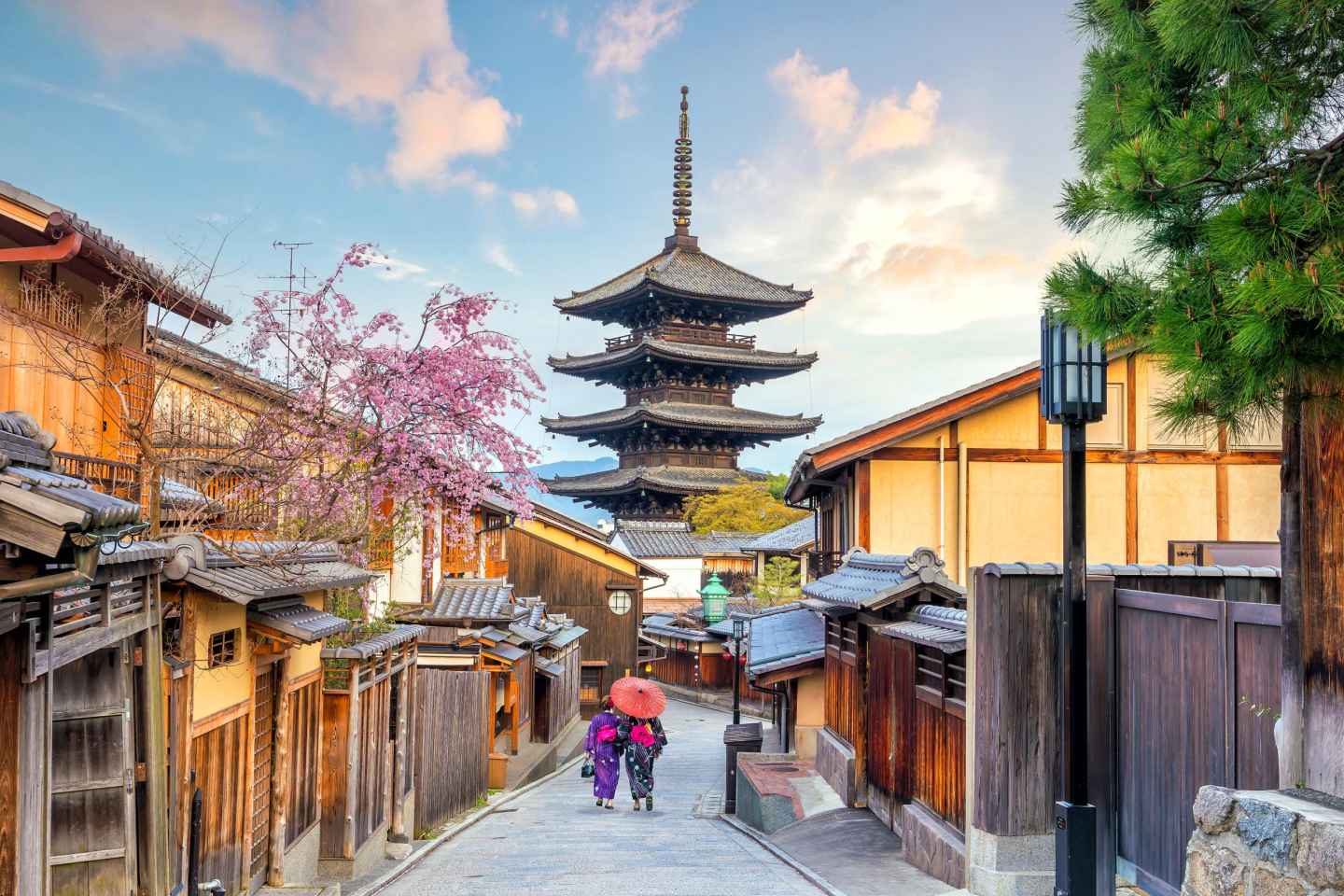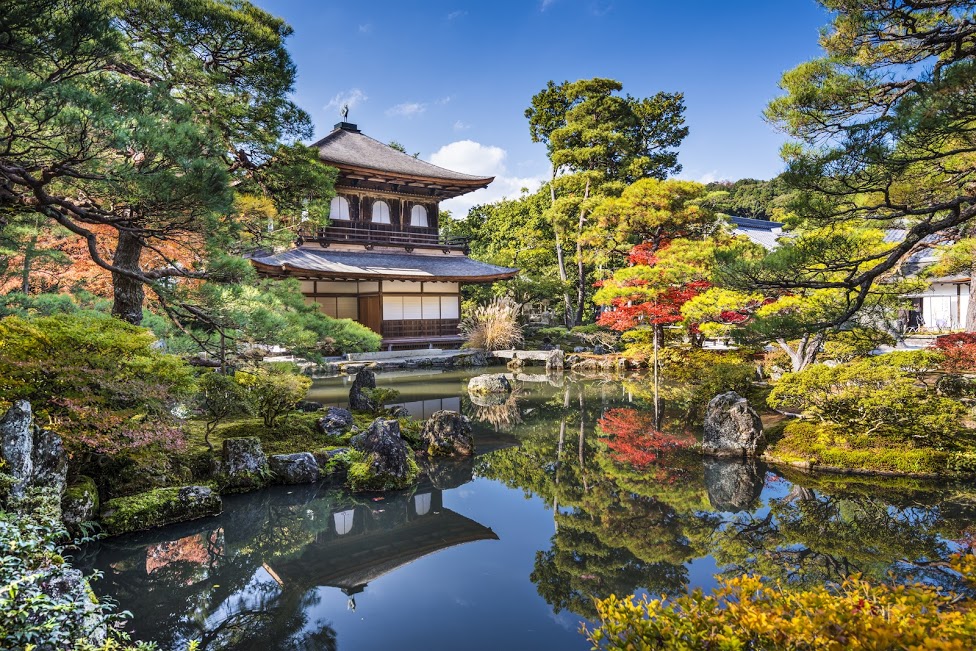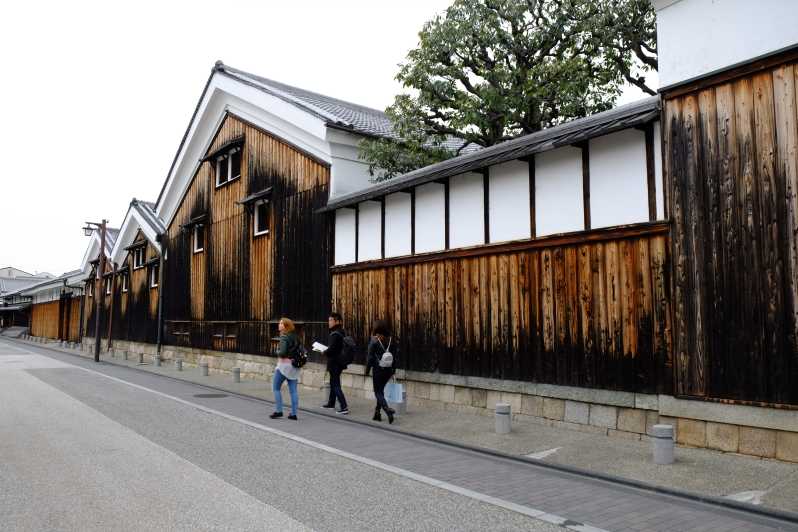
Imagine yourself strolling through the enchanting streets of Kyoto, Japan, surrounded by centuries-old temples and traditional wooden houses. As you wander, the air is filled with a sense of serenity and ancient history. And then, you come across an unassuming sake brewery tucked away in one of these hidden alleyways. Curiosity piqued, you step inside, ready to uncover the secrets of this revered Japanese beverage. In this article, “Stylish.ae Uncovers: Sipping Sake in Kyoto’s Ancient Streets,” we invite you to join us on a journey through time and taste, exploring the unique experience of savoring sake in the heart of one of Japan’s most treasured cities.

Kyoto: The Ancient City
Kyoto, the ancient city of Japan, is steeped in history and cultural heritage. With its well-preserved temples and shrines, traditional geisha districts, and quaint neighborhoods, Kyoto offers a glimpse into Japan’s rich past. The city’s modern charm, blending with its historical significance, makes it a captivating destination for travelers seeking an immersive cultural experience.
Historical significance
Known as Heian-kyo during the Heian period, Kyoto served as the imperial capital of Japan for over a thousand years. It was the center of politics, culture, and arts, shaping the country’s history. The city’s numerous temples and shrines, such as Kiyomizu-dera and Kinkaku-ji, stand as testaments to its historical importance and architectural brilliance.
Cultural heritage
Kyoto is the epitome of Japanese culture and traditions. The city is renowned for its geisha culture, where skilled performers entertain guests with traditional arts, such as dance, music, and tea ceremonies. The geisha districts of Gion and Pontocho are vibrant hubs, where visitors can witness the grace and beauty of these iconic figures.
Modern charm
Beyond its historical and cultural significance, Kyoto also offers a modern and lively atmosphere. The city seamlessly combines traditional and contemporary elements, with its bustling shopping streets, innovative architecture, and trendy cafés. From exploring the vibrant Nishiki Market to immersing yourself in the serene Bamboo Forest of Arashiyama, Kyoto has something to offer for everyone.
Sake: The Traditional Japanese Drink
Sake, often referred to as Japanese rice wine, holds a significant place in Japanese culture. Made from fermented rice, this traditional drink has a rich history dating back thousands of years. Understanding the origin, production process, and the varieties of sake can provide a deeper appreciation for this unique beverage.
Origin and history
Sake has been an integral part of Japanese culture for centuries. Its exact origin is uncertain, but it is believed that sake production began around 2,500 years ago. Initially used in religious ceremonies, sake gradually became a staple in Japanese society, playing a significant role in celebrations, rituals, and social gatherings.
Production process
The production of sake involves a meticulous process that requires attention to detail and expertise. The rice grains are polished to remove the outer layers, exposing the starchy core. The polished rice is then washed, soaked, and steamed before being mixed with koji, a type of mold that converts starches into fermentable sugars. The koji-kin converts the rice starches into sugars, which yeast then ferments into alcohol.
Varieties of sake
Sake comes in a wide range of flavors and aromas, making it a versatile drink that can be enjoyed in various ways. The taste and characteristics of sake depend on factors such as the type of rice, water source, brewing techniques, and the addition of other ingredients. Some popular types of sake include Junmai, Ginjo, and Daiginjo, each offering a different aroma and level of refinement.
The Art of Sake Tasting
Sake tasting is an art that allows enthusiasts to explore the diverse flavors and nuances of this traditional Japanese drink. By understanding how to find the right sake, deciphering flavor profiles, and appreciating the delicate aromas, one can truly experience the depth and complexity of sake.
Finding the right sake
When embarking on a sake tasting journey, it is essential to find the right sake that suits your preferences. Factors such as rice variety, brewing methods, and the region of production can influence the taste of sake. Exploring different types and styles of sake can help you discover your preferences and expand your palate.
Understanding the flavor profiles
Sake exhibits a wide range of flavor profiles, ranging from light and fruity to rich and robust. Through the process of tasting, you can identify notes of fruit, flowers, rice, and even umami flavors. The texture and mouthfeel of sake also contribute to the overall tasting experience, with some varieties having a smooth and velvety texture, while others may feel crisp and dry.
Appreciating the aroma
The aroma of sake is an integral component of its tasting experience. By gently swirling the sake in a glass and taking a moment to inhale its fragrance, you can discover a whole new dimension of the drink. Sake can have a subtle and delicate aroma or a bold and pronounced one, depending on the brewing process and rice variety used. Recognizing these scents can enhance your overall enjoyment of sake.
Exploring Kyoto’s Sake Scene
As the birthplace of sake, Kyoto boasts a vibrant and diverse sake scene. From traditional sake breweries to contemporary sake bars, the city offers endless opportunities to delve into the world of this ancient drink. Additionally, Kyoto hosts various sake festivals and events, providing a unique cultural experience for sake enthusiasts.
Traditional sake breweries
Kyoto is home to numerous traditional sake breweries, where the art of sake making has been passed down through generations. These breweries often offer guided tours, allowing visitors to witness the fermentation process and learn about the history and techniques behind sake production. Sampling fresh sake straight from the source is an unforgettable experience.
Contemporary sake bars
In recent years, Kyoto has seen a rise in contemporary sake bars that cater to both locals and tourists. These bars specialize in showcasing a wide range of sake varieties, offering tasting flights and expertly pairing sake with different dishes. The ambiance in these establishments ranges from cozy and intimate to trendy and modern, providing a stylish setting to enjoy sake.
Sake festivals and events
Throughout the year, Kyoto hosts several sake festivals and events, celebrating the cultural significance of this traditional drink. One notable event is the Fushimi Sake Festival, where visitors can sample sake from different breweries and immerse themselves in the lively atmosphere. These festivals are not only an opportunity to taste a variety of sake but also to learn about the history and craftsmanship behind this esteemed beverage.

Discovering the Enchanting Streets of Kyoto
No trip to Kyoto would be complete without exploring its enchanting streets, which offer a glimpse into the city’s captivating past and vibrant present. From geisha districts to historic temples and shrines, and charming neighborhoods, Kyoto’s streets are an open invitation to embark on a cultural adventure.
Geisha districts
Kyoto’s traditional geisha districts, such as Gion and Pontocho, are a must-visit for anyone seeking an authentic Japanese experience. These historic areas are lined with traditional wooden machiya townhouses, where geishas entertain guests with their refined arts. Walking through the narrow streets, you may catch a glimpse of beautifully adorned geishas in their elegant kimono, adding an air of mystery and allure to the atmosphere.
Historic temples and shrines
Kyoto is famous for its abundance of temples and shrines, each showcasing exquisite architecture and religious significance. Kiyomizu-dera, with its iconic wooden terrace overlooking the city, and Fushimi Inari Taisha, known for its thousands of torii gates, are just a few examples of the many awe-inspiring sites to explore. These spiritual landmarks offer a serene escape from the hustle and bustle of the city, allowing visitors to immerse themselves in a sense of tranquility.
Quaint neighborhoods
Beyond the tourist hotspots, Kyoto is also home to charming neighborhoods that offer a more local and intimate experience. Places like Arashiyama and Higashiyama are known for their traditional architecture, tranquil gardens, and inviting teahouses. Wandering through these quaint streets, you can soak in the ambiance of old-world charm while discovering hidden gems, such as traditional crafts shops and cozy cafes.
Best Places to Sip Sake in Kyoto
For those looking for the best places to enjoy sake in Kyoto, the city offers a range of options to suit every taste. From authentic sake bars to Michelin-starred establishments and hidden gems, Kyoto’s sake scene has something for everyone.
Authentic sake bars
Kyoto is home to plenty of authentic sake bars that allow you to savor the pure flavors of this traditional Japanese drink. These bars serve a curated selection of sake from local breweries, often incorporating seasonal and limited edition varieties. The intimate setting and knowledgeable staff create an immersive experience, guiding you through the nuances of sake tasting.
Michelin-starred establishments
For a more upscale sake experience, Kyoto boasts several Michelin-starred restaurants that excel in both culinary expertise and their sake offerings. These establishments combine the art of fine dining with carefully selected sake pairings, elevating the dining experience to new heights. From tasting menus to a-la-carte options, these restaurants present an opportunity to indulge in the harmony of exceptional cuisine and exquisite beverages.
Hidden gems
Venturing off the beaten path can lead to hidden gems in Kyoto, where you can find unique sake experiences away from the crowds. These hidden sake bars and breweries often prioritize quality and craft, offering personalized tastings and insider knowledge about the sake they serve. Discovering these hidden gems allows for an intimate and authentic sake appreciation experience.
Kyoto’s Culinary Delights
Pairing sake with traditional Japanese cuisine is an exquisite culinary experience, as both the drink and the food complement and enhance each other’s flavors. In Kyoto, you can indulge in a wide array of dishes, ranging from street food favorites to unique dining experiences.
Pairing sake with traditional Japanese cuisine
Kyoto’s culinary scene is renowned for its dedication to traditional Japanese cuisine, known as washoku. From delicate sushi and sashimi to flavorful kaiseki (multi-course meals), the city offers endless opportunities to pair sake with an array of dishes. The umami-rich flavors of sake harmonize with the fresh ingredients and subtle seasoning of washoku, creating a symphony of flavors on the palate.
Street food favorites
Exploring Kyoto’s streets is an invitation to indulge in mouthwatering street food favorites. From piping-hot takoyaki (octopus balls) to savory yaki-onigiri (grilled rice balls), the city’s food stalls and local eateries offer a delightful array of snacks to satisfy your taste buds. Pairing these delectable bites with a glass of sake adds an extra layer of enjoyment to the culinary adventure.
Unique dining experiences
For those seeking extraordinary dining experiences, Kyoto’s culinary scene has much to offer. From dining in centuries-old machiya townhouses to enjoying innovative fusion cuisine, the city caters to diverse tastes and preferences. Pairing sake with unique dishes that push the boundaries of tradition can result in surprising and delightful combinations, making every dining experience a memorable one.
Tips for Sake Appreciation
To fully appreciate sake, it is important to understand proper serving temperatures, sake etiquette, and the rituals associated with sake tasting. These tips will enhance your sake appreciation journey and allow you to embrace the cultural significance of this traditional Japanese drink.
Proper sake serving temperature
Sake can be served at various temperatures, each showcasing different characteristics of the drink. The general guideline is to serve sake chilled, at room temperature, or warmed, depending on the variety and your personal preference. Experimenting with different serving temperatures can bring out unique flavors and aromas, providing a varied and enriching tasting experience.
Sake etiquette and customs
When partaking in a sake tasting or visiting a traditional sake brewery or bar, it is important to observe sake etiquette and customs. This includes pouring sake for others before filling your own cup, using both hands when receiving or offering sake, and refraining from topping off your own cup. These gestures of respect and appreciation for the sake culture contribute to a harmonious and enjoyable experience.
Sake tasting rituals
Sake tasting rituals, such as the traditional three-step process of seeing (observing the clarity and color), smelling (inhalation of the aroma), and sipping (savoring the flavor) are an essential part of the sake appreciation journey. Taking your time to appreciate each step allows you to fully immerse yourself in the complexities and subtleties of sake. Engaging all your senses in the process will deepen your understanding and enjoyment of this traditional Japanese drink.

Cultural Etiquette in Kyoto
When visiting Kyoto, it is crucial to respect local customs and cultural practices. The city takes pride in its traditions and heritage, and by following these cultural etiquettes, you can engage more meaningfully with the local community and create a positive cultural exchange.
Respecting local customs
Kyoto is deeply rooted in tradition, and it is important to respect and honor the customs of the local residents. This includes observing proper behavior when visiting temples and shrines, such as removing your shoes, refraining from touching sacred objects, and maintaining a quiet and respectful demeanor. Familiarizing yourself with these customs beforehand will ensure a respectful and harmonious experience.
Interacting with geishas
Encountering a geisha in Kyoto is a unique and cherished moment. However, it is important to remember that geishas are respected professionals and not tourist attractions. If you encounter a geisha or maiko (apprentice geisha), it is customary to maintain a respectful distance and refrain from touching or obstructing them. Taking photographs without their permission is also considered impolite. By observing these guidelines, you can demonstrate your appreciation for their artistry and contribute to their cultural preservation.
Visiting temples and shrines
Kyoto is home to numerous temples and shrines, which hold immense religious and cultural significance. When visiting these sacred sites, it is important to adhere to proper conduct. This includes dressing modestly, refraining from making loud noises, and following any specific rules or guidelines outlined by the temple or shrine. Respecting the sanctity of these places allows for a meaningful and respectful visit.
Planning Your Sake-Filled Trip to Kyoto
To make the most of your sake-filled trip to Kyoto, careful planning is essential. Considering the best time to visit, choosing suitable accommodations, and identifying must-visit attractions will ensure a memorable and fulfilling experience in this ancient city.
The best time to visit
Kyoto offers something unique in every season, making it a year-round destination. Spring, with its cherry blossoms in full bloom, is a particularly enchanting time to visit. Autumn, when the vibrant autumn foliage paints the city in a riot of colors, is equally picturesque. However, each season holds its own charm, and visiting during quieter periods can offer a more tranquil and authentic experience.
Choosing accommodations
Kyoto offers a wide range of accommodations to suit different preferences and budgets. From traditional ryokans (Japanese inns) that provide a culturally immersive experience to modern hotels and guesthouses, there are options for every traveler. Staying in a centrally located area, such as the Gion or Higashiyama districts, allows for easy access to the city’s major attractions and sake establishments.
Must-visit attractions
While Kyoto is abundant with attractions, some are must-visit sites that encompass the essence of the city. Kinkaku-ji, with its golden pavilion reflected in a tranquil pond, and Fushimi Inari Taisha, known for its iconic torii gates, are iconic landmarks that should not be missed. Additionally, exploring the historic district of Higashiyama and marvelling at the beauty of Arashiyama’s bamboo grove are experiences that capture the essence of Kyoto’s ancient streets.
In conclusion, Kyoto offers a journey through time, where the ancient intertwines with the modern, and cultural heritage greets contemporary charm. From exploring the enchanting streets to discovering the diverse sake scene, Kyoto has much to offer for travelers seeking an immersive cultural experience. By delving into the historical significance, traditional art of sake tasting, and culinary delights, one can fully appreciate the allure of this ancient city. Plan your sake-filled trip to Kyoto, and let yourself be enchanted by the mesmerizing streets and the rich cultural tapestry that unfolds at every turn.

Exploring The Hidden Gems Of Tokyo From A UAE Perspective(Opens in a new browser tab)




